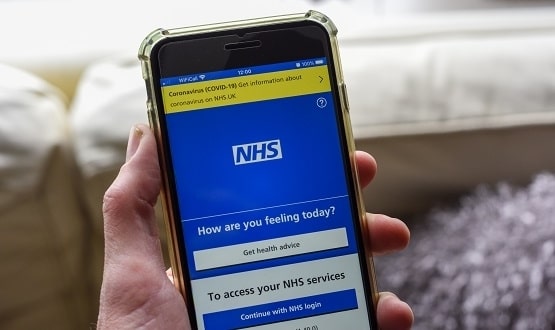How Widening Digital Participation tackled the “digital divide”
- 15 December 2020

A few weeks ago, the final report from the NHS’ Widening Digital Participation Programme was published. Nicola Gill, director of the Widening Digital Participation programme at NHS Digital, explores how the initiative has tried to tackle the “digital divide”.
This year has marked a sea change in the use of digital technology.
For many, our entire personal, work and social lives have gone online, from doing the supermarket shopping to attending a GP appointment, ordering a repeat prescription or catching up with friends.
Being able to benefit from this digital world is dependent on having an internet connection, a suitable device and the skills to use it – but 7 million people in the UK don’t have internet access at home and 9 million can’t use the internet without help.
Potential to make a difference
When the Widening Digital Participation Programme began in 2017, it was groups of people like these that we wanted to reach.
We knew that digital technology had the potential to make a huge difference to people’s lives, especially their health and wellbeing but for some groups of people, these benefits were out of reach.
Technology can be more convenient and empower people to manage their health and care, especially for those who find it difficult to access traditional services.
Yet it is often those people who face the biggest barriers to using digital technology. When we set up the Widening Digital Participation Programme, we wanted to truly understand what those barriers were as well as discover ways to overcome them.
Improving digital literacy
Through the initial phase of the programme, work was focused on improving digital health literacy in communities by linking up with community organisations – members of the social change charity Good Things Foundation’s network of ‘online centres’ – to offer learning and support.
Then for the second three-year phase, Good Things Foundation – our delivery partner – supported locally-led pathfinder projects all over the country to look at where digital technology could improve health and care.
To understand this, we had to go where people are, whether that was a GP surgery, a shelter for homeless people, a dementia support group or a cancer support network.
Being there, talking to people, drinking tea and learning about their lives allowed us to gain trust and valuable insights into what they really needed. Hearing about the challenges people faced, and then involving them in the design of the pathfinders, was critical.
Involving people from the start
To co-design and deliver digital health services that people wanted to use and were able to access, we had to involve them right from the start.
All the pathfinders followed these same co-design principles, taking into account the views of users and stakeholders, creating recommendations, trying different approaches, tweaking them along the way and then evaluating their outcomes.
The 23 pathfinders supported people from various excluded or disadvantaged communities, including those experiencing living with homelessness or substance abuse, carers, people with dementia, and adults with long-term conditions.
The trials begin
Digital technology was trialled in a range of ways – in Hastings, tablets were used in outreach work with homeless people, enabling health issues to be triaged. Through the Leeds Dementia Pathfinder, people with the condition and their carers were loaned Alexa devices, bringing huge benefits to their wellbeing. The power of social media was harnessed in Stoke-on-Trent as Facebook was used to promote the local breast screening service, proving so successful that the same techniques have now been adopted in other parts of the country.
In addition to the main pathfinders, another five projects and 22 mini pathfinders developed community-led local digital health hubs, where people could improve their digital skills and confidence.
Our prototype digital health hub was a joint project in Nailsea, Somerset involving a number of organisations and run by volunteers. Over two years later, it is still going strong, having boosted digital skills, signposted users to local health services and motivated them to become healthier.
Lessons learned
One of our recommendations in the final ‘lessons learned’ report of the Widening Digital Participation programme is for a national network of these community-led local digital health hubs to be created. Not only are they a tried and tested way to improve digital health literacy, this upskilling prevents exclusion by tackling wider health inequalities.
We’re also calling for more support for people to try out different devices and assistive technologies to boost their health; for better data on the links between digital inclusion, health care and outcomes; and for networks of digital health champions to be created among health and care staff.
Most importantly, NHS commissioners, policy makers and designers of digital health services and tools should commit to leave no-one behind. Tackling the ‘digital divide’ – the links between digital exclusion and social and economic disadvantage – is crucial to reduce health inequalities.
And that has been brought into sharper focus than ever this year when the landscape of healthcare – and life as we know it – changed quickly and dramatically.
Digital shift
When the Widening Digital Participation programme started, we never could have foreseen that the catalyst for the biggest ever shift towards digital was a global pandemic, which struck just as the programme ended in March 2020. As coronavirus (COVID-19) stopped us from meeting up in person, digital technology has been central to keeping us connected.
With digital now firmly in the spotlight, the lessons learned from the Widening Digital Participation programme will be invaluable for the future.
But while digital technology has been a lifeline for many this year, there remain swathes of people who can’t access the benefits and choice it can bring. This includes some who are clinically vulnerable to coronavirus, such as people aged over 70 – this group are also more likely to have limited or no internet access or low levels of digital skills. Now that the world has shifted to relying on technology as the norm, rather than the exception, there’s a huge risk that these people and others facing similar challenges will become even more digitally excluded.
That’s why, although the Widening Digital Participation programme has concluded, the NHS’s strong focus on digital inclusion continues. The important lessons learned through this project will carry on making an impact as the legacies of our pathfinders continue to harness digital technology to improve people’s lives and their health.




